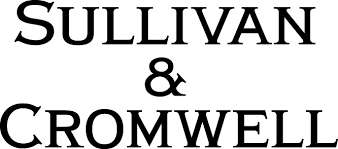
Key Takeaways
1. Take action now. The first step in managing a crisis should occur before a crisis hits. Ensure the right control systems are in place; identify constituents (your shareholders, employees, customers, regulators) who will need to be informed; define your crisis team and make sure they know your organization.
2. Remember your “North Star†principles. When a crisis breaks, your comments will be tested by your constituencies and the market—make sure all corporate communications are consistent with your company’s guiding principles. 3. Get the facts first. Statements made in the first days of a crisis will be amplified. Avoid the inclination to offer defenses too early and risk making potentially inaccurate statements. You can and should talk about process and timing, but avoid rushing to explain the situation before you have the facts.
4. Plan for social media. Develop a social media strategy, including identifying a point person who is experienced in engaging through social and broadcast media before a crisis happens. You do not want your first “at bat†communicating with the public to be in the middle of a crisis.
5. Keep your team small. In a crisis situation, a small, core team is more effective than a large team. Having counsel who understand and can address all aspects of the crisis—DOJ and SEC elements, civil litigation and non-U.S. consequences— can help avoid missteps.
6. Establish the board’s role. An audit or special litigation committee of the board may be best positioned to take the lead on responding to a crisis. If management is leading the investigation, and not involved in the underlying conduct, one independent director or the chair to oversee the work of management may be sufficient board involvement. If management was involved in the underlying conduct, the board’s role must increase. Define a discrete team that can handle the investigation. Try to avoid being disruptive to the day-to-day operations of the company.
7. Engage in candid and thorough dialogue with regulators. Transparency will help minimize the crisis in the long-run and give the company more time to investigate and present its position to the government.
8. Self-report and preserve the potential for cooperation credit. Increasing incentives for whistleblowers make it even more crucial to reach out to regulators early. Under DOJ policy, getting there first, along with cooperation and remediation, means the company can receive full cooperation credit and avoid a guilty plea. If regulators learn about a potential issue in advance from a whistleblower or through a social media leak, regulators may not offer full cooperation credit.
9. Recognize the global reach. The bigger the crisis, the greater the regulatory competition from authorities around the world. Develop a coordinated strategy for interacting with multiple regulators and aim to resolve all aspects of the crisis, including civil claims, at the same time. Trying to achieve a coordinated settlement is important for moving past a crisis and reducing the cost.
10. Focus on the finish line before you get there. Boards of directors and CEOs should be thinking of what the end state looks like from a regulatory and business perspective and about remediation as soon as the root cause of the problem that led to the crisis is identified. When it comes to remediation, actions speak louder than words—having a plan in place when you begin resolution discussions effectively demonstrates the company’s commitment to resolving the problem and establishes credibility that goes a long way with regulators.
Authored by:
Ann-Elizabeth Ostrager
Partner, Litigation
ostragerae@sullcrom.com
+1 212 558 7357
Robert J. Giuffra, Jr.
Co-Chair of Sullivan & Cromwell
giuffrar@sullcrom.com
+1 212 558 3121
Jay Clayton
Senior Policy Advisor & Of Counsel
Former Chair, U.S. Securities and
Exchange Commission
claytonwj@sullcrom.com
+1 212 558 3445
Karen Patton Seymour
Partner, Litigation
Former Chief of the Criminal
Division, U.S. Attorney’s Office for
the Southern District of New York
seymourk@sullcrom.com
+1 212 558 4144


